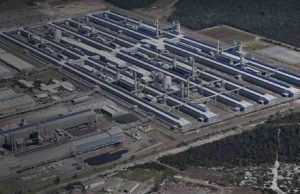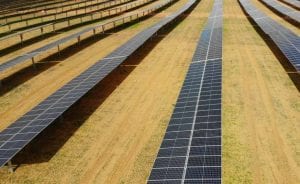It seems that South Australia has approached Tesla Motors about the possibility of establishing an electric vehicle manufacturing plant in the heart of Australia’s dying petrol car industry, but the California-based company politely declined.

Last week, RenewEconomy wondered if prime minister Malcolm Turnbull, an admirer of the Tesla Model S and who would like “innovation” to be his middle name, should offer Tesla a manufacturing base in Australia to help meet the unprecedented demand (325,000 and rising) for its new lower price Model 3 electric vehicle.
After all, we suggested, France had made a similar offer, proposing to Tesla that it set up shop in an about-to-be-closed nuclear plant, and Turnbull himself had admired Tesla’s ability to turn an industrial relic (an old General Motors factory) into its manufacturing base. And Australia has plenty of industrial relics.
It turns out the Jay Weatherill, the premier of South Australia – where much of Australia’s rapidly fading car manufacturing industry has been based – made such an offer during his own visit to the Tesla factory last month.
“I met with Tesla last month in San Francisco and have expressed that we would be supportive of them establishing a presence in South Australia,” Weatherill told RenewEconomy via a spokesman.
“The company have expressed that they have no intention of setting up operations in Australia at present.”
That’s a shame. South Australia, which is leading the country in its transformation from a fossil fuel grid to one based mostly around renewable energy, is looking for the industries of the future, where Weatherill rightly believes that the jobs and economic growth will be found. He will have to look elsewhere.
RenewEconomy asked Tesla if it was considering setting up shop in Australia and a spokesman said, no, they had no such intention at this time.
Geographic expansion is on the cards for Tesla, however, with founder and CEO Elon Musk talking of his desire to establish a European plant, which prompted the French offer.
Australia, it seems, will have to content itself with companies possibly supplying some parts to the global EV market, such as the Tritium electric vehicle charging stations, although it does have two companies building electric buses, with one receiving a big order for the Asia market.
Probably the biggest impediment to EV manufacturing in Australia is the size of the market. Less than 1,000 EVs were sold up to the end of 2014, although that number will have been boosted by sales of the Model S.
That makes Australia an expensive market. Both Nissan and GM will not bother trying to sell their latest EV models in Australia, even though the likes of Origin Energy says that Australia could lead the world in “solar-powered electric vehicles” by making use of its near 5GW of rooftop solar to help charge the EV batteries.
But as recent reports noted, Australia needs to make several key policy decisions to boost the EV market.
A starting point would be to introduce some sort of fuel efficiency standards (Australia has none). Other options would be to mandate fleet buyers to install EVs, encourage battery charging infrastructure, and to offer other incentives, such as exclusion from import duties, discounts for registration, and priority in parking and peak travel times.








